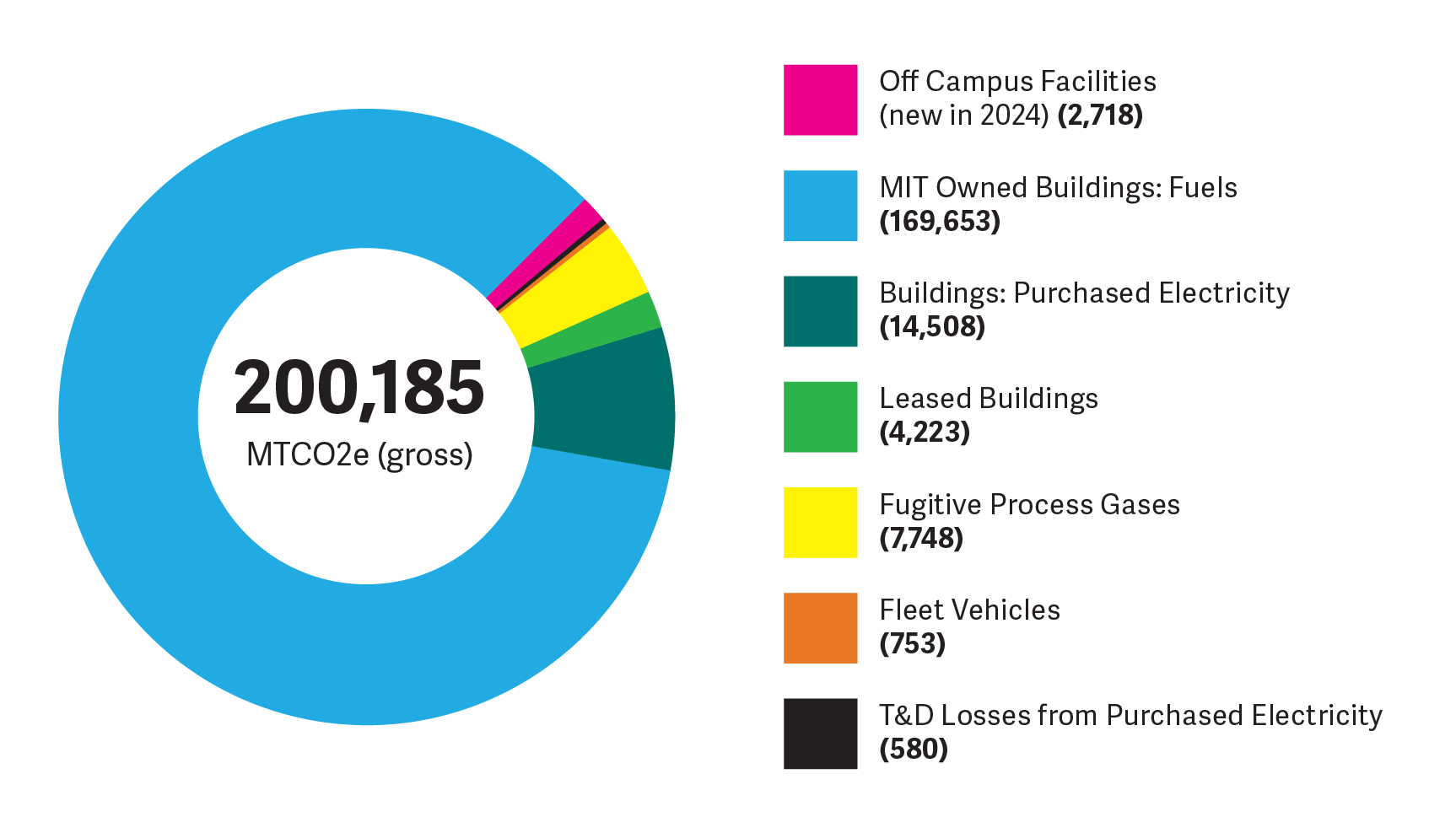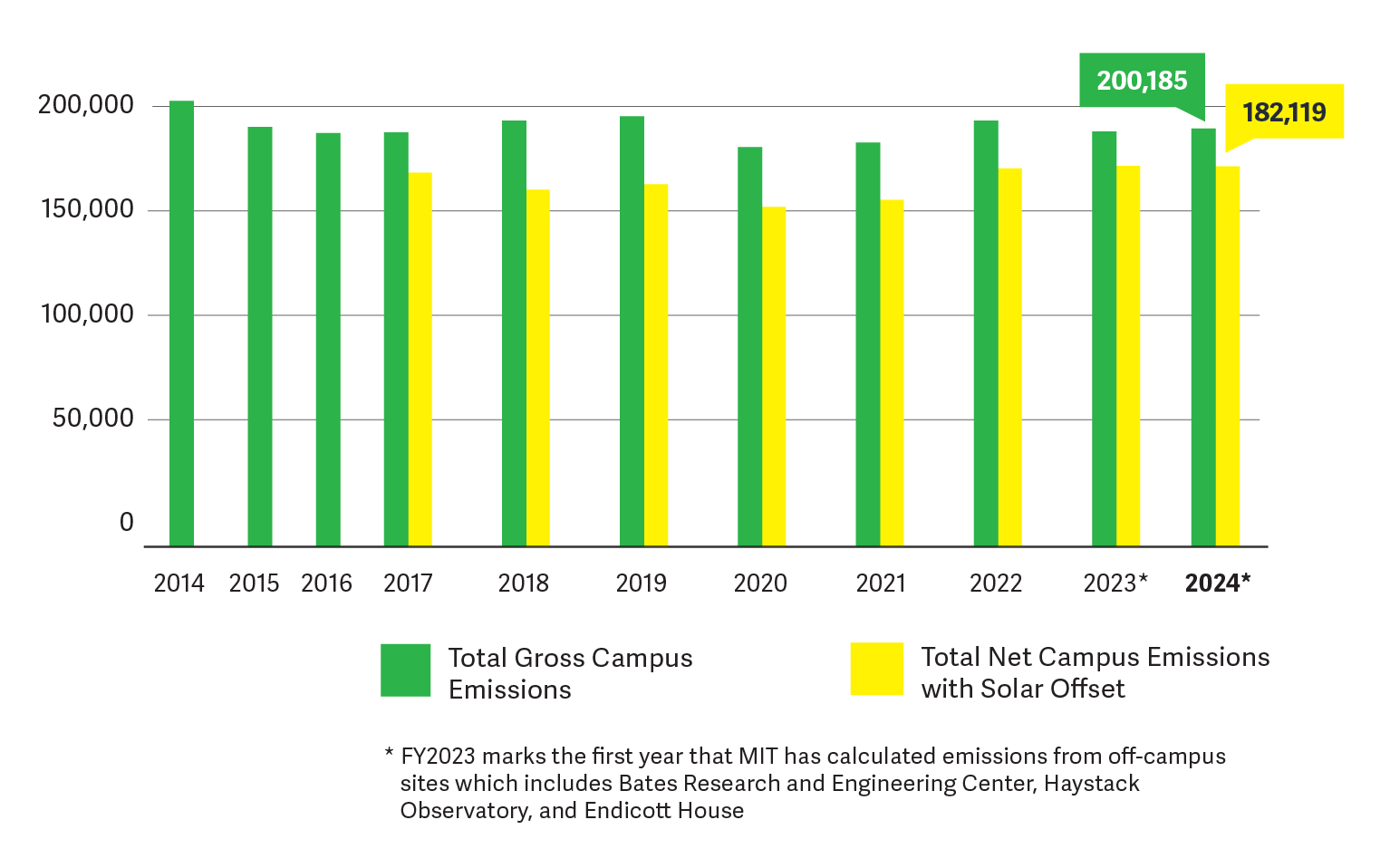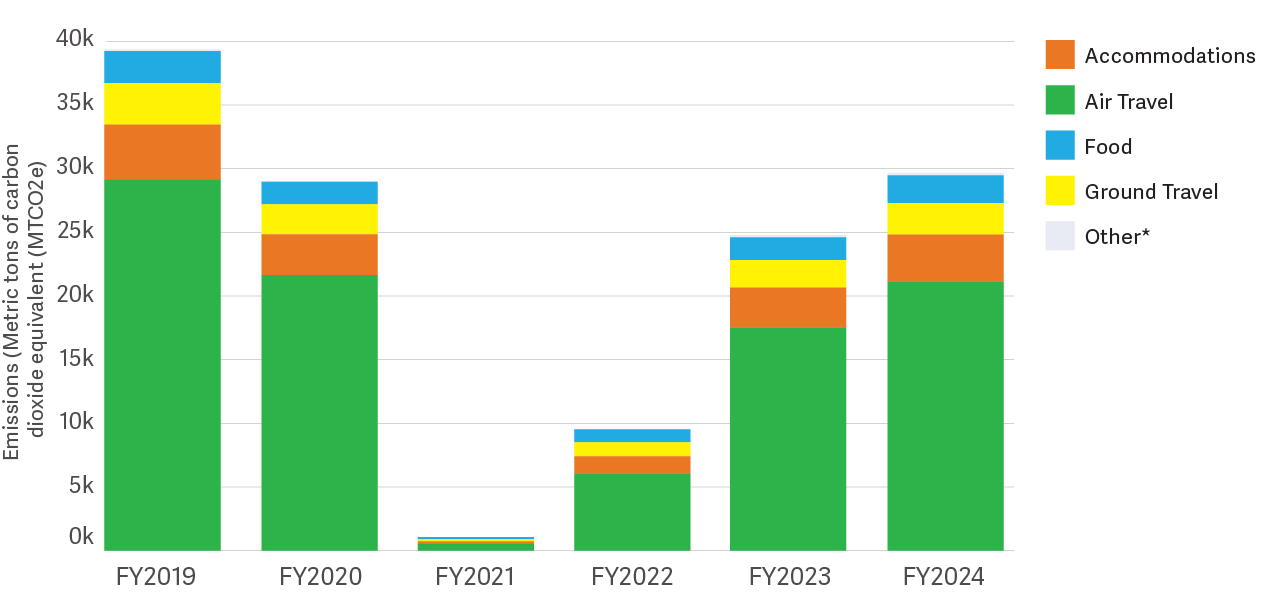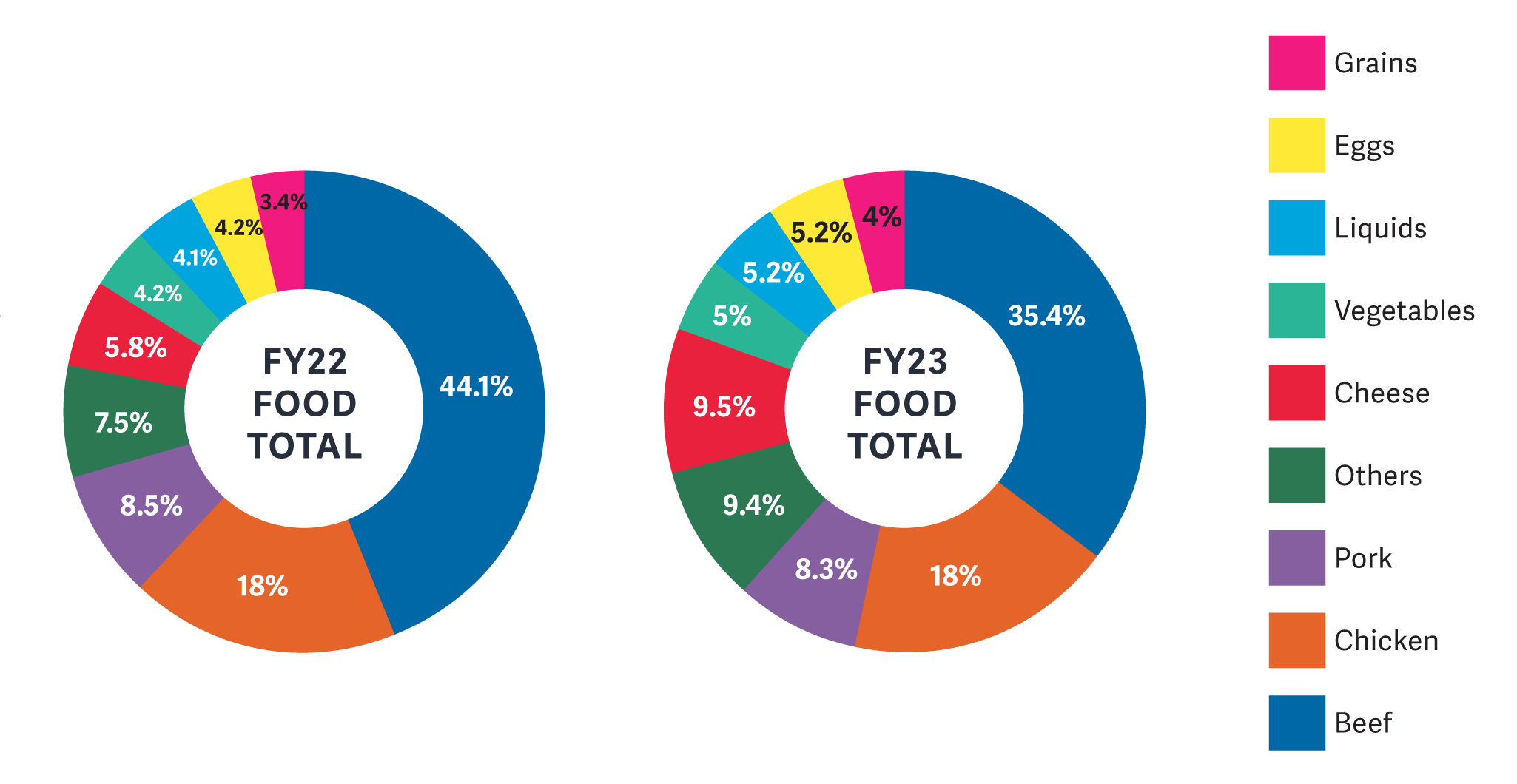
Progress
MIT Greenhouse Gas Emissions Sources, FY2024

MIT Greenhouse Gas Emissions, FY2024

Business Travel Total Emissions by Fiscal Year

Tracking Food-Related Emissions
In 2023, MIT set a food impact goal to reduce the GHG emissions associated with campus food purchases by 25 percent by 2030, with a focus on residential dining. Meeting global climate goals relies on significant emissions reductions from the food system. The largest food-related climate emissions come from animal-based foods, especially red meat. Where possible, shifting menus to include more plant proteins and local seafood can lead to a reduction in greenhouse gases. Incorporating global recipes that highlight these foods can help institutions like MIT lead on climate-friendly menus that embrace cultural diversity.
The charts below display two years of purchasing data that MIT is using as a baseline for its food-related climate strategy. Charts illustrate the emissions from different food categories across all residential hall retail locations and the Forbes Family Cafe. The Institute is also committed to accounting for and reducing the carbon emissions associated with MIT business travel, the result of which efforts can be seen in the bottom bar graph.
Food-Related Purchasing by Category


